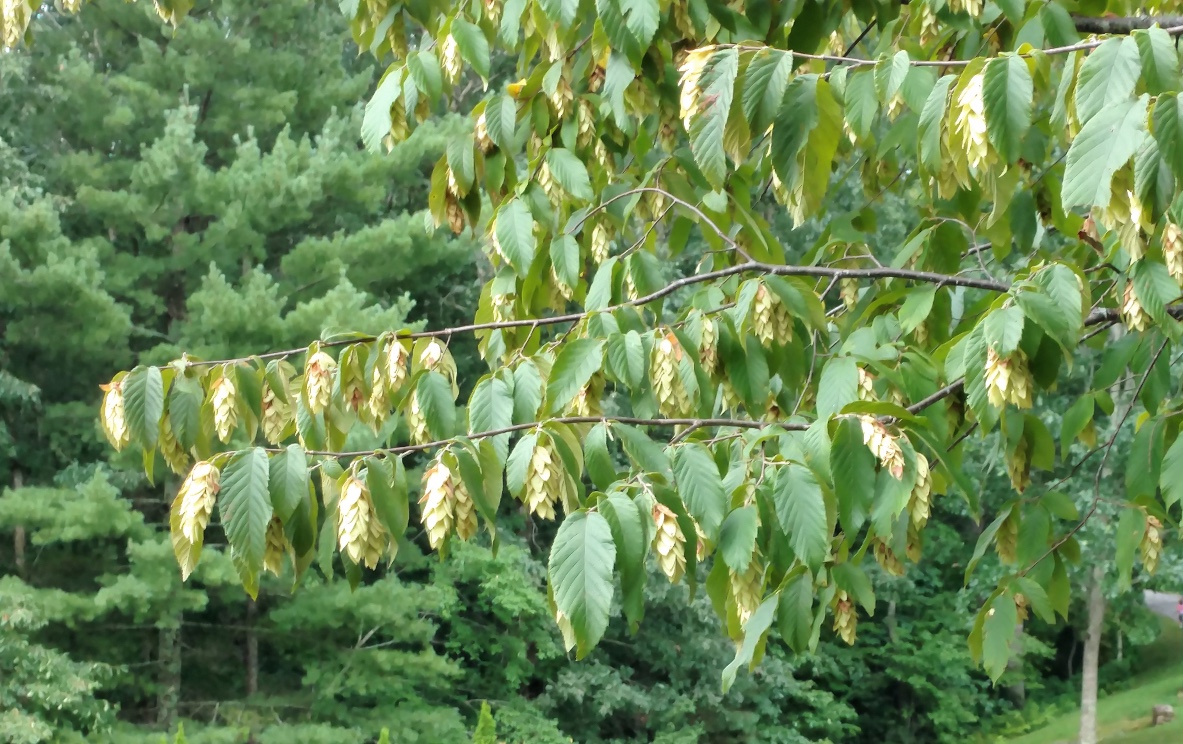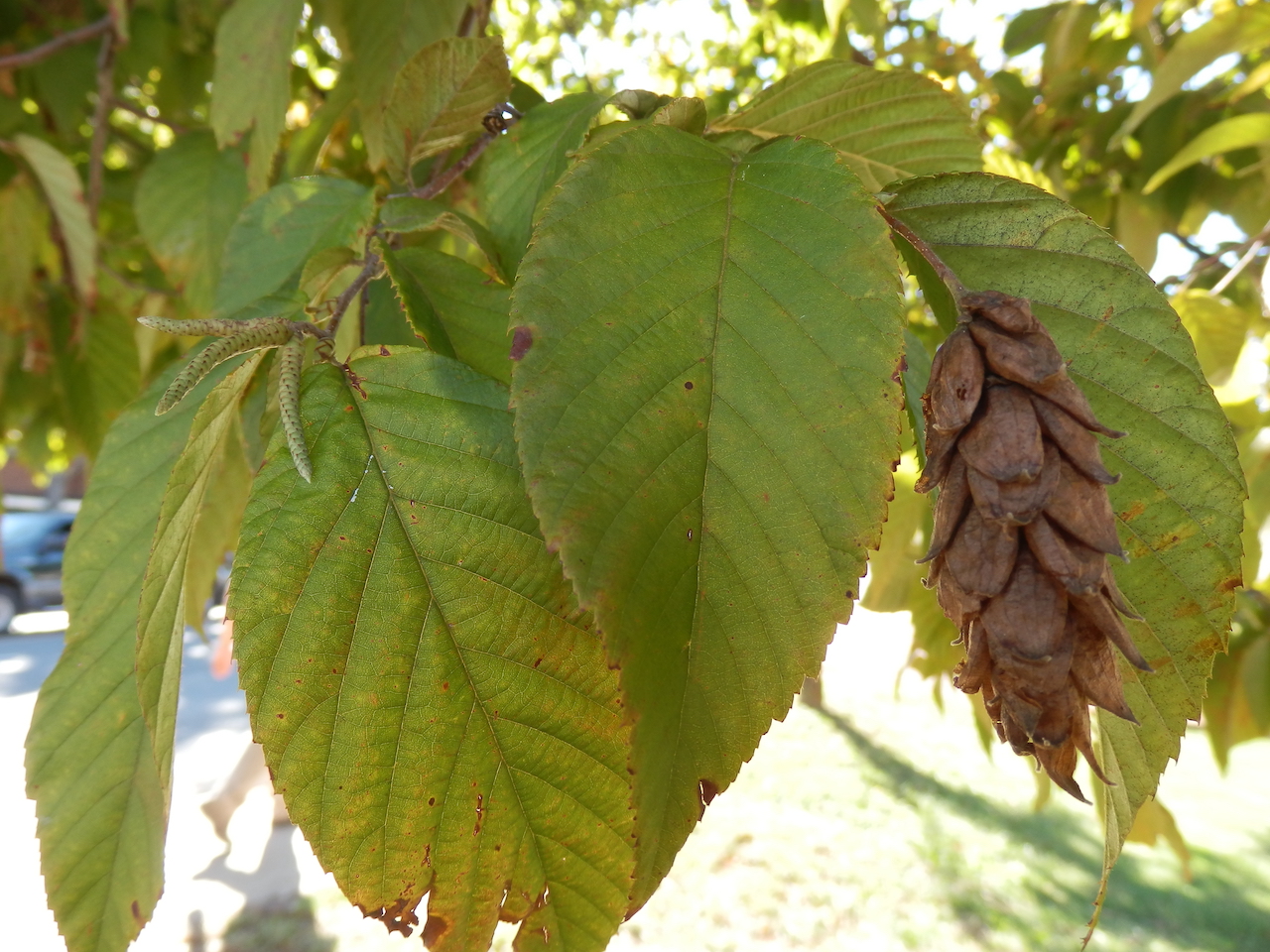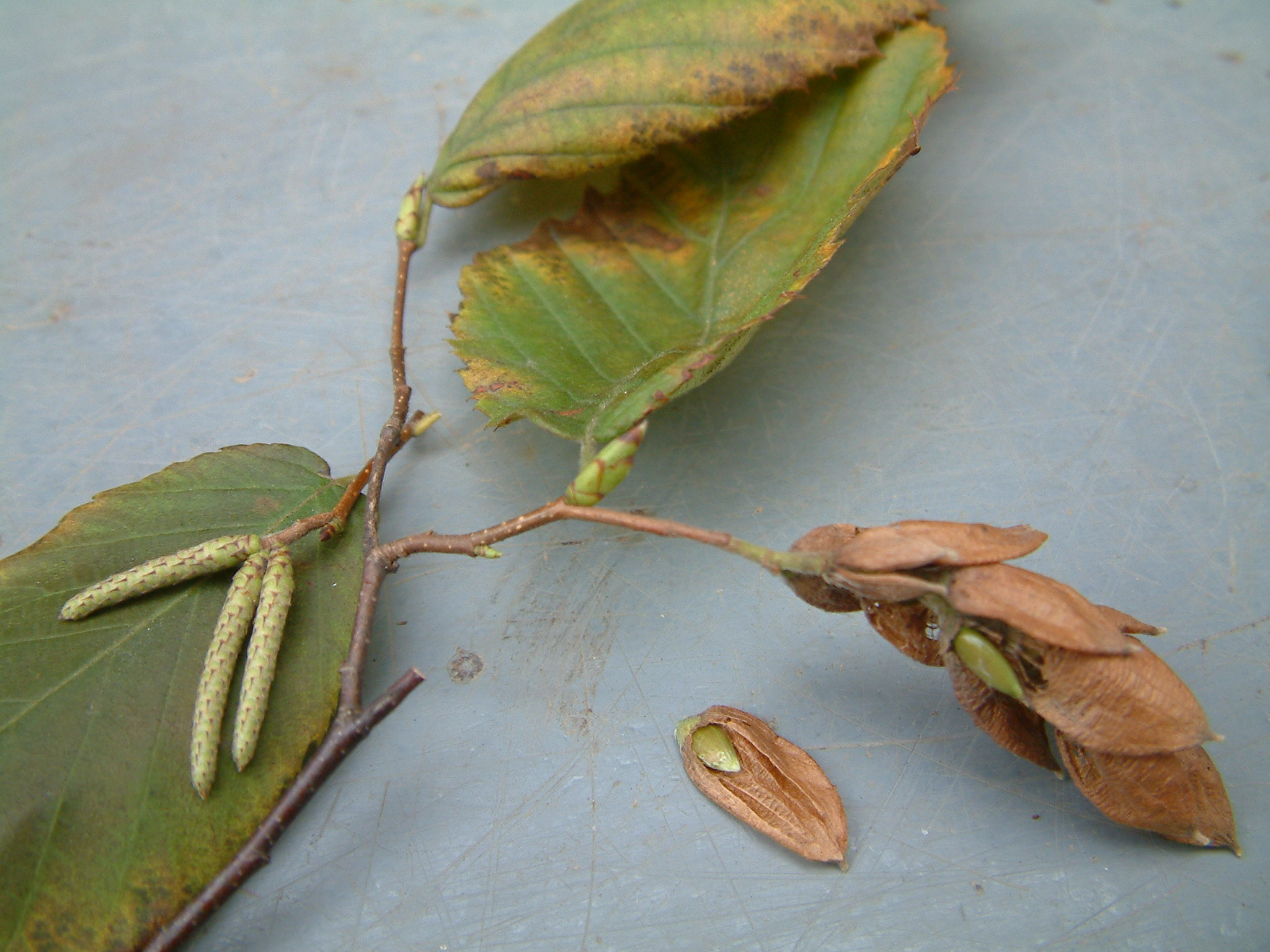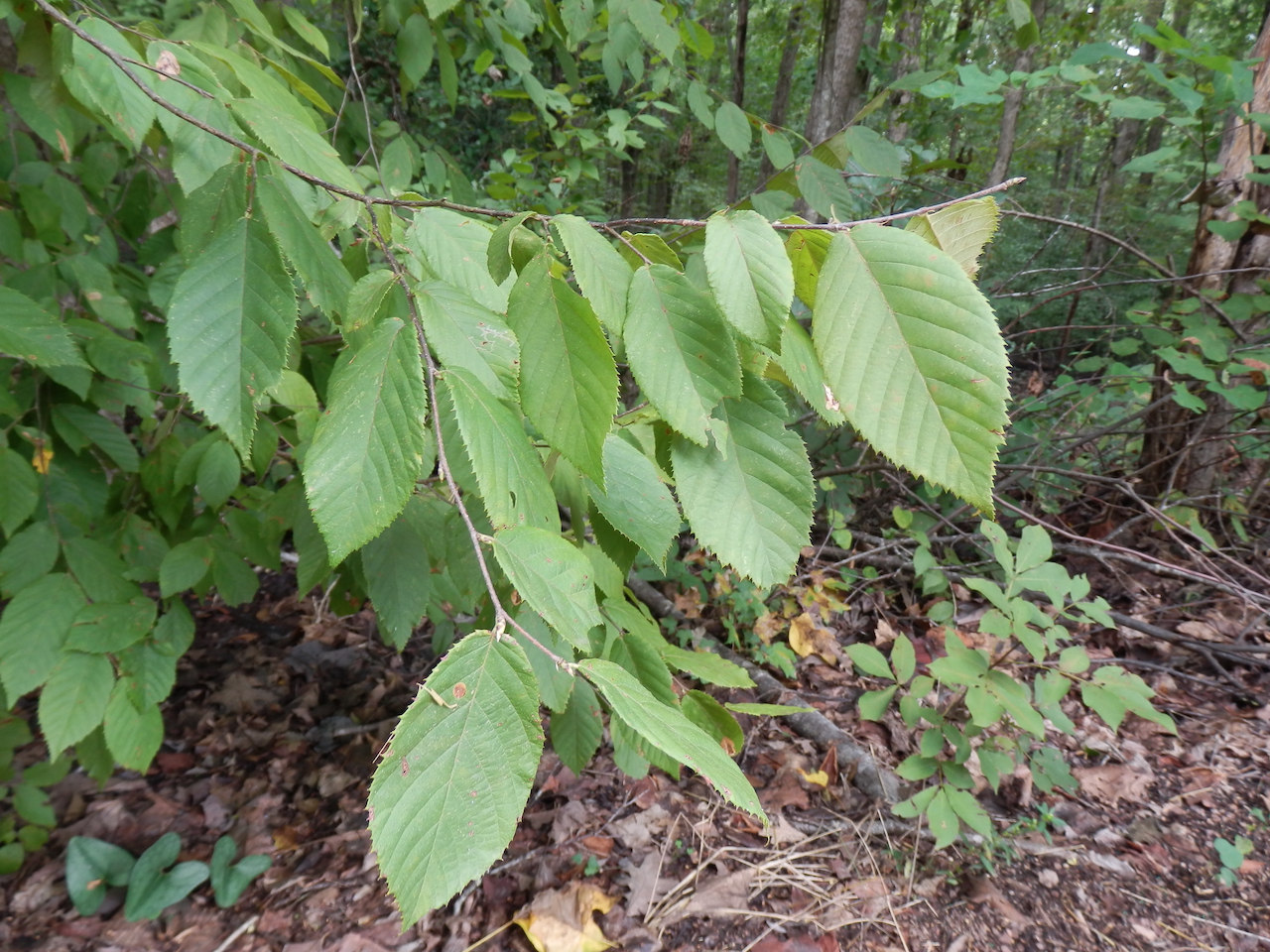NC Native Plant Society:
Plant Details
Ostrya virginiana
American Hop-hornbeam, Eastern Hop Hornbeam
Scientific Name: |
Ostrya virginiana |
|---|---|
Genus: |
Ostrya |
Species Epithet: |
virginiana |
Common Name: |
American Hop-hornbeam, Eastern Hop Hornbeam |
Plant Type |
Tree |
Life Cycle |
Perennial |
Plant Family |
Betulaceae (Birch Family) |
Native/Alien: |
NC Native |
Invasive Status: |
(*Key) |
Size: |
12-36 ft., 36-72 ft. |
Light: |
Sun - 6 or more hours of sun per day, Part Shade - 2 to 6 hours of sun per day, Less than 2 hours of sun per day |
Soil Moisture: |
Dry, Moist |
Bloom Time: |
April, May |
Growing Area: |
Mountains, Piedmont, Sandhills, Coastal Plain |
Habitat Description: |
Mesic to dry forests, often rocky, especially over basic rocks, reaching high elevations. Fairly common to common over most of the mountains and Piedmont, but a mysterious scarcity of records for the west-central Piedmont. Is this an artifact of collection, or is this a real anomaly? At any rate, in must be considered rare or very infrequent in this zone of the Piedmont. Infrequent in the western Coastal Plain, including the Sandhills, and rare and local elsewhere in the Coastal Plain. |
Leaf Arrangement: |
Alternate |
Leaf Retention: |
Deciduous |
Leaf Type: |
Leaves veined, not needle-like or scale-like |
Leaf Form: |
Simple |
Life Cycle: |
Perennial |
Wildlife Value: |
Highest Wildlife Value |
Landscape Value: |
Recommended and Available |
State Rank: |
S5: Secure (*Key) |
Global Rank: |
G5 - Secure (*Key) |
|
Female catkins resemble the fruit of hops, hence the common name Cultivated specimen in Buncombe County, NC
Larry Mellichamp |
|
|
This is a small to rarely medium-sized deciduous tree commonly used as a street tree. Mecklenburg County, NC Larry Mellichamp |
|
|
Note the dry paper covering around the fruits, the immature male catkins, and the two-toned green and brown buds (Carpinus caroliniana has brown buds). Mecklenburg County, NC Larry Mellichamp |
|
|
Sharply serrated leaves Chatham County, NC Larry Mellichamp |
|
|
Bark that has long and narrow vertical plates that are loose and shaggy on the ends -"vertical shreddy catch scratch bark" Mecklenburg Co, NC, cultivated Larry Mellichamp |
|
Links: |
|
back to top
go to plant details search
go to plant images search
go to gallery home
back to Initial o Gallery
back to orchids
back to Carnivorous Plants
back to Trilliums








